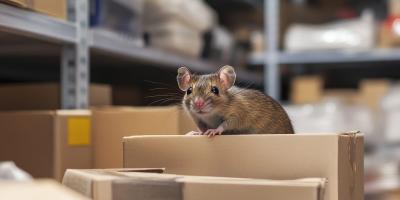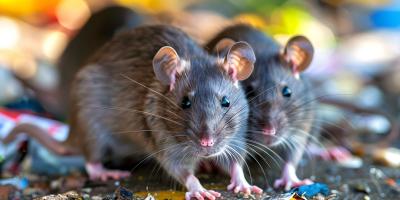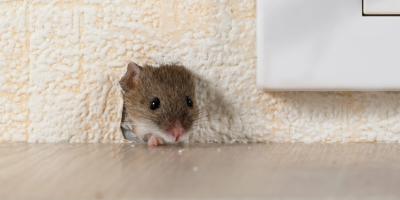Top 5 Pests Faced by Schools and Universities

For schools, universities, and educational facilities, pest problems can pose a major danger to the health of students and staff. Far from scaring pests away, the large number of individuals gathered in a school area can significantly increase the chances for pests to find their way into a safe and comfortable nesting area - making full pest removal difficult even for experienced school administrators.
The main issue: schools provide just about everything a pest needs to start a successful nest, including available food and water left behind by students to hiding places in dormitories and utility rooms where colonies of pests can hide relatively undisturbed. That makes schools a target for not just the usual suspects, but a wide range of pests looking to settle in somewhere.
Knowing exactly which pests are most likely to cause problems in schools can offer administrators a major boost to their pest prevention processes. Here’s a closer look at the most common pests to affect schools, and how to best keep them from establishing a nesting place where they’re likely to bother your students.
Common Pests In Schools and Dormitories
Preventing the spread of pests throughout your school or university does not conform to a “one size fits all” solution. The actions needed to keep pests from infesting living and learning areas will depend heavily on where you are located, the size of your student body, previous pest history, and which pests you are specifically dealing with.
Here are a look at some of the most common pest issues faced by schools, dormitories, and universities to help you better understand exactly which might be affecting your educational facility and why.
Bed Bugs
If there is any pest most likely to affect school visitors or dormitory students, it may be bed bugs. Usually identified by the bites they leave behind, bed bugs are highly effective invaders with a penchant for breeding in huge numbers and establishing colonies that can be very tough to remove.
Often surreptitiously carried on backpacks, on clothing, on linens, and on other fabrics, bed bugs can survive gently washes and will breed rapidly in just a short time.
And because it takes only a single entry point for a bed bug infestation to take hold, bed bugs can be one of the most persistent pests for school, and one of the toughest to completely eliminate.
Roaches
Cockroaches are notorious for how quickly and effectively they can spread throughout school buildings. Once tempted by the lure of food or water, cockroaches can rapidly lay eggs and spread throughout a property, often hidden behind walls and above ceilings.
And because cockroach eggs can be transferred on the bottom of shoes and in luggage, students can easily carry cockroaches directly into your school with even knowing it. From that point, it only takes one small space for a cockroach to establish a nest and begin laying eggs - and that can lead directly to a widespread infestation, as well as the spread of cockroach-borne diseases.
Rodents
Although significantly more likely to find their own way into your school rather than being brought by students and staff, rodents (like mice and rats) still present a high risk for universities and schools looking to prevent pest infestations.
Rodents can make their way inside buildings and living areas from the outdoors, often in search of warmth and food - especially as temperatures drop in late fall and early winter. At these critical times, it’s important to make sure there is as little in your dormitories or educational spaces to tempt rodents into making their way inside.
It’s also important to be sure there are no entry points for rodents looking to make their way inside. Be sure to securely shut all windows and doors, and patch up any cracks or holes where a mouse or rat could squeeze inside. Remember: mice only need a few bare inches of open space to squeeze inside, so carefully check your exterior for any entry point and securely seal it before they get a chance.
Ants
As with many residential and commercial properties, schools are easily at risk of infestation by ants. Much like other insects, ants come into your buildings in search of a few of life’s key ingredients: food, water, and shelter.
Unlike other insects, however, not all ants will come looking to establish a nest. In many cases, in fact, ants will actually create a base outside your walls, and will only venture inside in search of crumbs of food or reliable sources of water. This makes stopping the infestation at its source a bit tricky, and will likely require some kind of bait trap and, in many cases, the assistance of an experienced ant removal specialist who can identify and remove ant species.
Flies
Regardless of where in the country your school may be located, flies remain a consistent problem for schools and universities of all sizes. From the large black flies of summer to the small indoor cluster flies of fall and winter, flies and other flying insects have long been one of the most bothersome pests for those living in dormitories or studying in a university’s common areas.
Flies, like other insect invaders, can be notoriously difficult to fully remove - mainly because they require such little space to breed and base their search. Whether hiding around garbage areas or buzzing around windows and attics in search of food, flies can easily spread disease and sicken students and staff if left undisturbed, making fly removal a hugely important part of any pest prevention strategy.
Keeping Pests Away Takes A Strategic, Determined Approach
Preventing pest problems in your school, university, or educational facility requires discipline toward a dedicated pest management plan all year round. For most facilities, this means working in conjunction with an experienced pest professional, who can help implement a thorough Integrated Pest Management strategy to head off infestations long before they get a chance to get settled.
Whether you’ve struggled with pest problems at your school or university in the past or you are simply looking to prevent problems with the school year ahead, don’t hesitate to get in touch and get your facility set up for intelligent pest prevention - because the only ones getting comfortable in your school should be students, not the pests they may bring with them.



